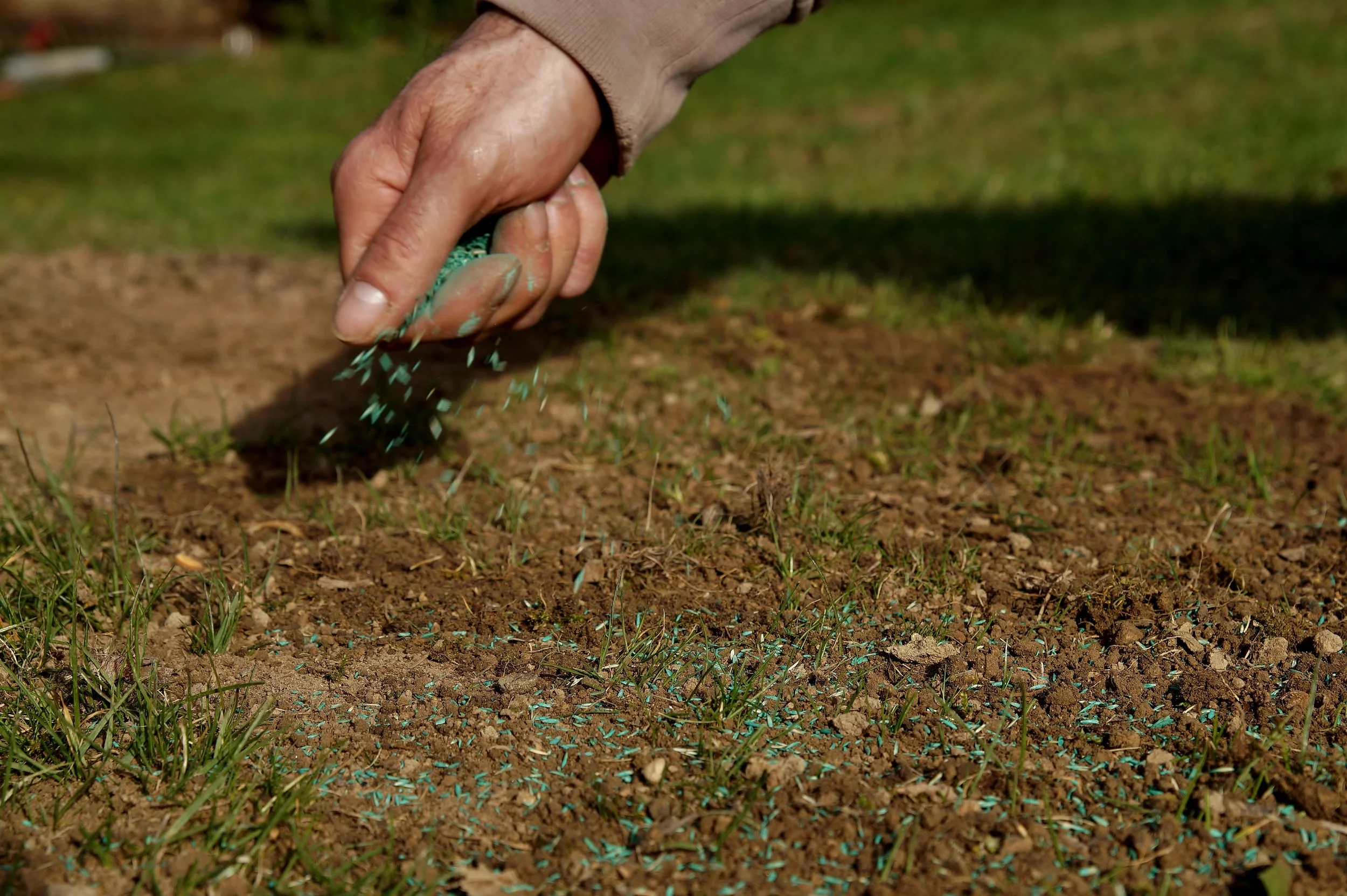Overseeding in Zoysia
You can overseed Zoysia with cool-season grasses like perennial ryegrass or turf-type tall fescue, but it’s not typically recommended, especially if your priority is your Zoysia.
This is not for the faint of heart or those unwilling to invest heavily in their lawns. Attempting to overseed zoyisa is expert-level stuff and WILL REQUIRE “MORE.”
Pros and Cons
Benefits
Green winter color – Zoysia turns brown in winter, whereas rye or fescue remains green.
Erosion control – Cool-season grasses germinate quickly and easily from seed, making them a great choice for slopes and shadey areas that struggle with erosion.
Cosmetic appeal – If you want green grass in the winter months, overseeding with a cool-season grass seed is the only way to do it.
Drawbacks
Competition – Rye/fescue competes heavily with Zoysia for sunlight, nutrients, and moisture as Zoysia breaks dormancy in late April–May. This can delay Zoysia green-up and weaken your base grass.
More Mowing – You’ll need to continue mowing through the fall, winter, and early spring.
More Watering - The rye/fescue grass will continue to require irrigation late in the season, which puts your irrigation system at risk of freeze damage if not adequately protected.
High-quality insulated RPZ covers are an absolute MUST!
You may also need to turn the system back on earlier than usual with warm-season grasses.
More Work – Additional maintenance practices, such as aeration, dethatching, and low-mowing (scalping), transition from “good to do but optional” to “must do.”
Aeration becomes a Fall (October) activity. This will drastically increase the germination rates of the seed. This can be instead of or in addition to the early summer aeration we typically recommend for warm-season grasses.
Low-mowing becomes a twice-a-year practice. Instead of just the spring to encourage early-season green-up and disease reduction, low-mowing before seeding in October is highly recommended.
More Chemicals - Two factors inherent to overseeding increase the need for chemical intervention.
1) The Transition - In the Spring (April - May), when the zoysia begins to green up, a blanket application of post-emergent herbicide is highly recommended to clean out the rye/fescue and reduce the competition for the awakening zoysia grass. Without this treatment, zoysia will be extremely slow to exit dormancy and will do so in a weakened state.
2) Disease - Like zoysia, rye/fescue has its own vulnerabilities to diseases and could require the use of fungicides in addition to those used to prevent disease in your zoysia.
More Money - All of these factors will inevitably increase the annual cost of lawn care.
Best Practice (If You Still Want to Try It)
If your goal is winter color and you’re willing to accept some spring setback:
LET US KNOW: If you plan to overseed, please let us know in advance so we can adjust your program and not apply fall pre-emergent herbicide.
Fall pre-emergent herbicide will STOP all seed from germinating.
Mow Zoysia short (1.5"–2") in October before overseeding to expose soil.
Aerate in October before seeding to maximize the rate of seed germination.
Seed: We recommend a blend of Rye and Fescue – apply at 10–15 lbs per 1,000 sq. ft.
In some cases, you may need to repeat the seeding process to achieve the desired result.
Fertilize lightly with a balanced fertilizer a couple of times throughout the overseeding lifespan.
We recommend 18-24-12 immediately after the seed begins to germinate, followed by a Second fertilizer application using an organic 8-2-2 in December. You can fertilize more, but be careful.
Water daily until established, then taper to 2–3x per week.
Spring Transition Plan
Come late March–April:
Mow low to scalp off the rye/fescue (1.5"–2").
Stop watering.
After the low mow/scalp, the transistional post-emergent herbicide will need to be sprayed to kill off the rye/fescue.
An extra application of our “Recovery Blend” fertilizer is recommended to help the Zoysia rebound.
Maintenance Difference
Compared to non-overseeded Zoysia:
More mowing (rye/fescue grows fast in cool weather)
More irrigation through winter/spring
Spring dethatching becomes far more important.
Extra fertilizer
Blanket spray of herbicide in spring to remove cool-season grass
There may also be a need for additional fungicide applications. Cool-season grasses are also very susceptible to fungal issues.
Alternative to Overseeding
In Central Arkansas’s climate, overseeding is a risk. Instead, you could:
Focus on Zoysia health going into dormancy (proper fertility, disease control).
Market your lawns as “naturally dormant” during winter — it’s normal and healthy for Zoysia.

